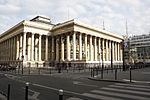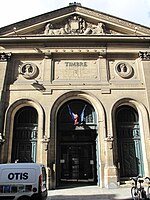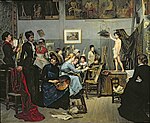2nd arrondissement of Paris

The 2nd arrondissement of Paris (IIe arrondissement) is one of the 20 arrondissements of the capital city of France. In spoken French, this arrondissement is colloquially referred to as deuxième (second/the second). It is governed locally together with the 1st, 3rd and 4th arrondissement, with which it forms the 1st sector of Paris. Also known as Bourse, this arrondissement is located on the right bank of the River Seine. The 2nd arrondissement, together with the adjacent 8th and 9th arrondissements, hosts an important business district, centred on the Paris Opéra, which houses the city's most dense concentration of business activities. The arrondissement contains the former Paris Bourse (stock exchange) and several banking headquarters, as well as a textile district, known as the Sentier, and the Opéra-Comique's theatre, the Salle Favart. The 2nd arrondissement is the home of Grand Rex, the largest movie theater in Paris.The 2nd arrondissement is also the home of most of Paris's surviving 19th-century glazed commercial arcades. At the beginning of the 19th century, most of the streets of Paris were dark, muddy, and lacked sidewalks. A few entrepreneurs copied the success of the Passage des Panoramas and its well-lit, dry, and paved pedestrian passageways. By the middle of the 19th century, there were about two dozen of these commercial malls, but most of them disappeared as the Paris authorities paved the main streets and added sidewalks, as well as gas street lighting. The commercial survivors are – in addition to the Passage des Panoramas – the Galerie Vivienne, the Passage Choiseul, the Galerie Colbert, the Passage des Princes, the Passage du Grand Cerf, the Passage du Caire, the Passage Lemoine, the Passage Jouffroy, the Passage Basfour, the Passage du Bourg-L'abbé, and the Passage du Ponceau.
Excerpt from the Wikipedia article 2nd arrondissement of Paris (License: CC BY-SA 3.0, Authors, Images).2nd arrondissement of Paris
Paris 2nd Arrondissement (Paris)
Geographical coordinates (GPS) Address Nearby Places Show on map
Geographical coordinates (GPS)
| Latitude | Longitude |
|---|---|
| N 48.869166666667 ° | E 2.3405555555556 ° |
Address
75002 Paris, 2nd Arrondissement (Paris)
Ile-de-France, France
Open on Google Maps











